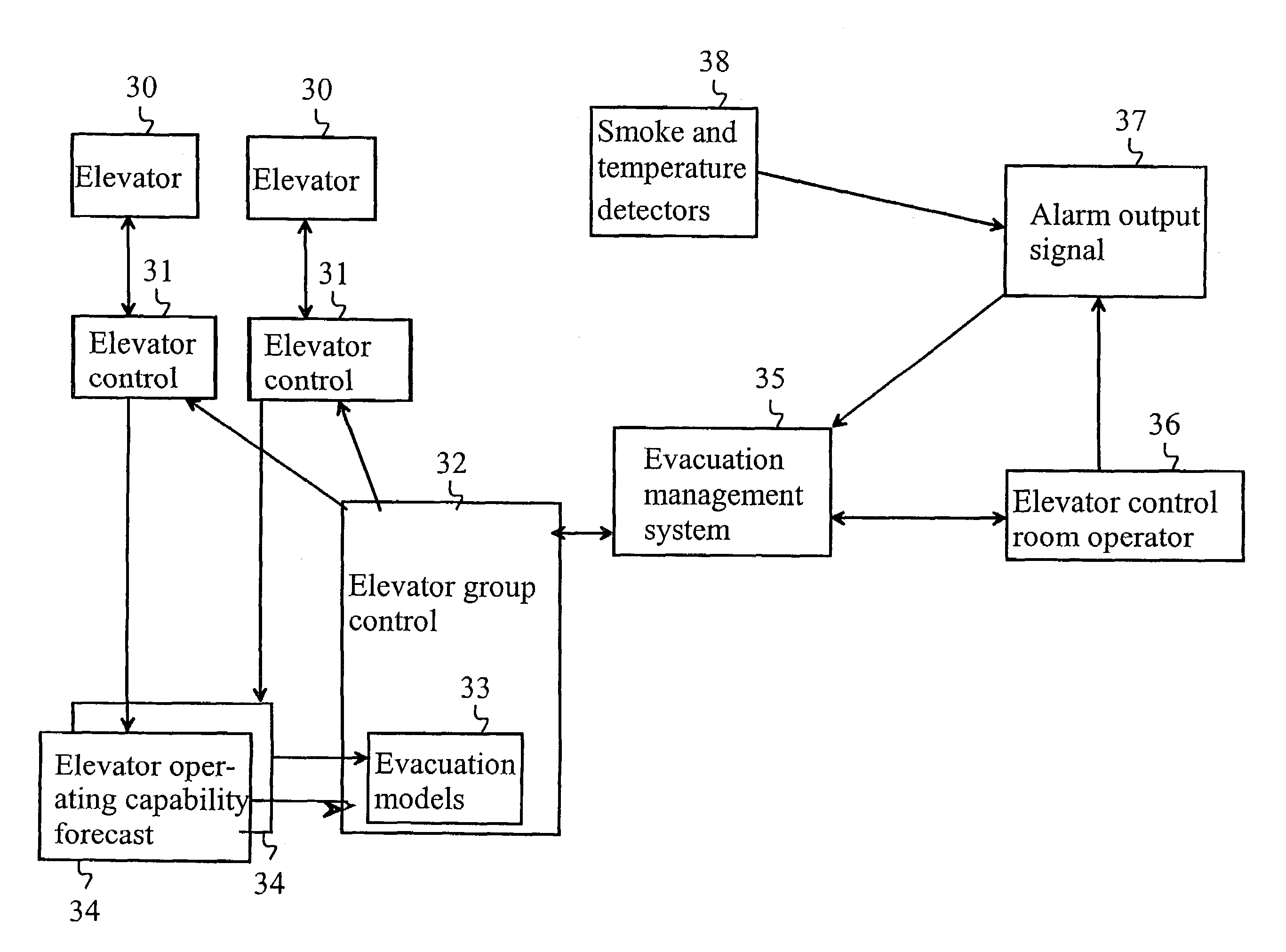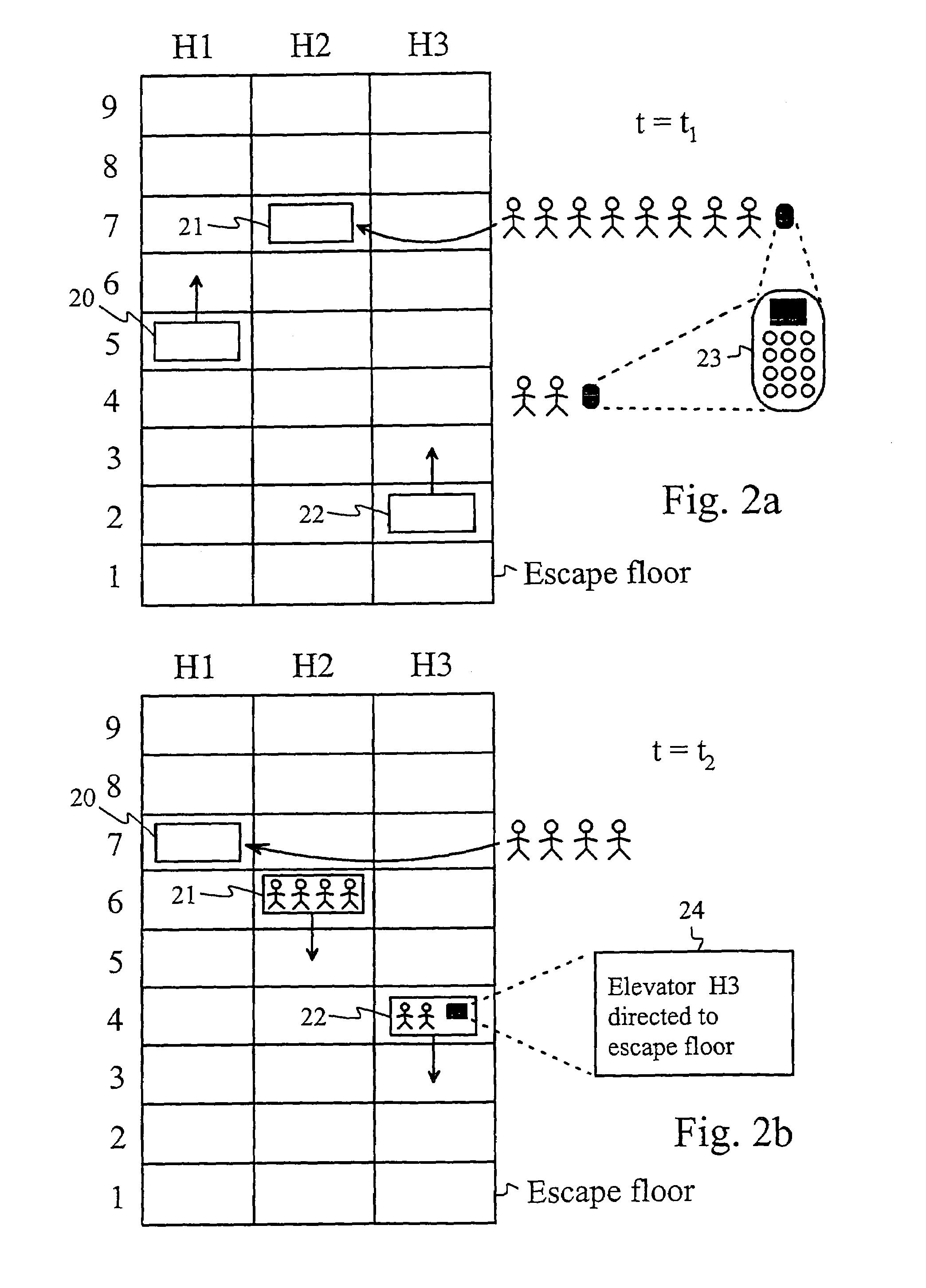Building evacuation elevator system
a technology for elevator systems and buildings, applied in elevators, alarms, instruments, etc., can solve problems such as damage to elevator systems, unsafe use of elevators, and danger to people in buildings, and achieve the effect of more safe and effective evacuation
- Summary
- Abstract
- Description
- Claims
- Application Information
AI Technical Summary
Benefits of technology
Problems solved by technology
Method used
Image
Examples
Embodiment Construction
[0025]The present invention discloses an evacuation method that utilizes the elevator system when a type of exceptional incident is detected on one or more floors of a building, which requires that the floor is emptied of people. This type of exceptional incident can typically be a fire, earthquake or bomb threat. The present invention relates expressly to control of the elevators in a manner deviating from normal operating mode. The purpose of the system is naturally to minimize the time spent on transporting people to the escape floor of the building (which is typically the lobby floor of the building). This minimization of time cannot be achieved with the normal serving of elevator calls but instead a special evacuation mode must be taken into use. This evacuation mode is also essentially different depending on whether the elevator system is a conventional system that follows up-down calls and destination floor calls given in the elevator car or a so-called destination call syste...
PUM
 Login to View More
Login to View More Abstract
Description
Claims
Application Information
 Login to View More
Login to View More - R&D
- Intellectual Property
- Life Sciences
- Materials
- Tech Scout
- Unparalleled Data Quality
- Higher Quality Content
- 60% Fewer Hallucinations
Browse by: Latest US Patents, China's latest patents, Technical Efficacy Thesaurus, Application Domain, Technology Topic, Popular Technical Reports.
© 2025 PatSnap. All rights reserved.Legal|Privacy policy|Modern Slavery Act Transparency Statement|Sitemap|About US| Contact US: help@patsnap.com



